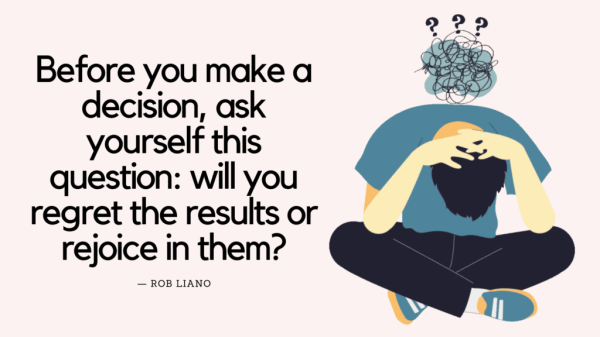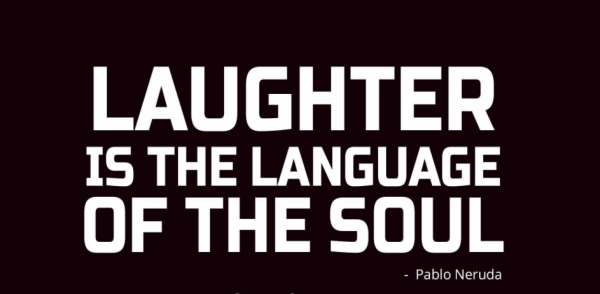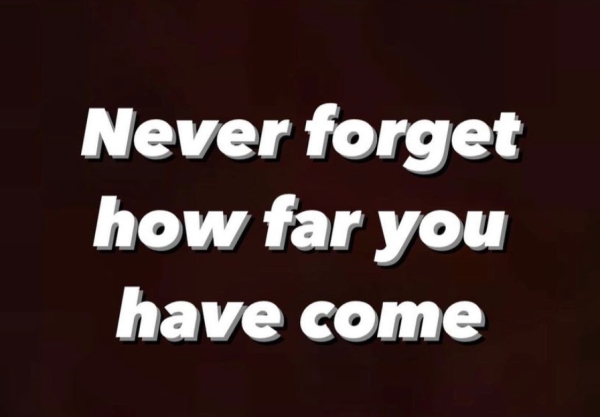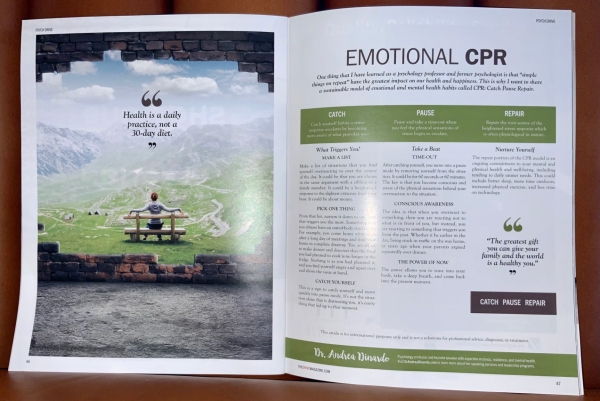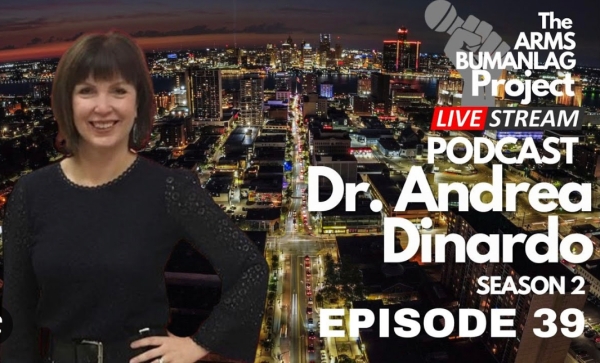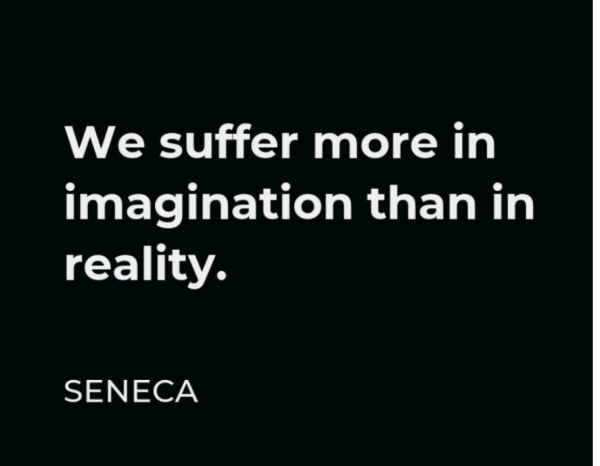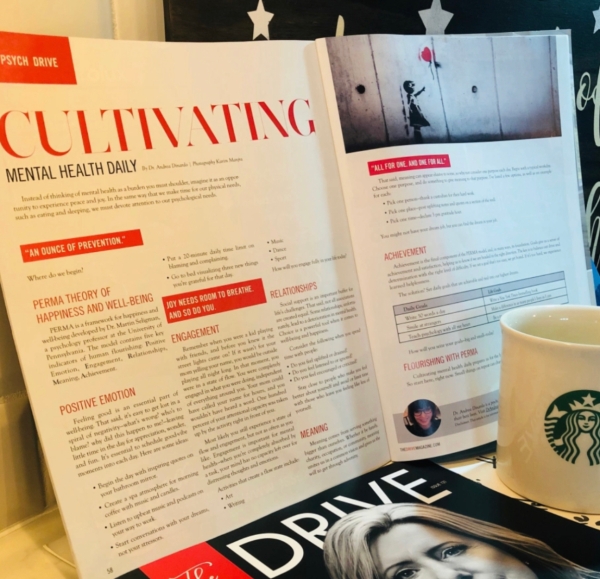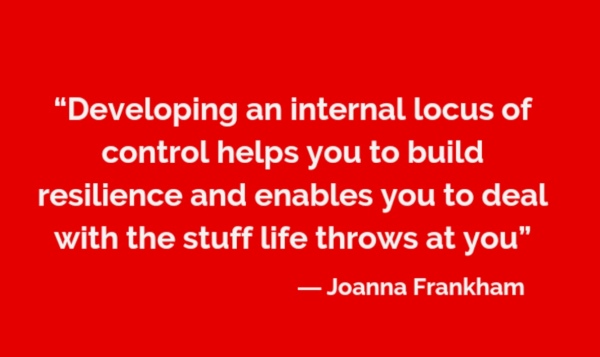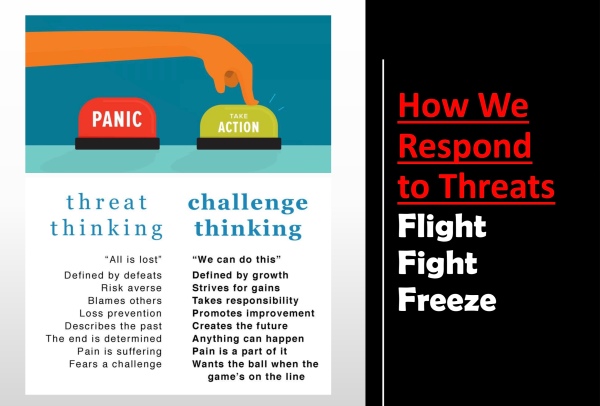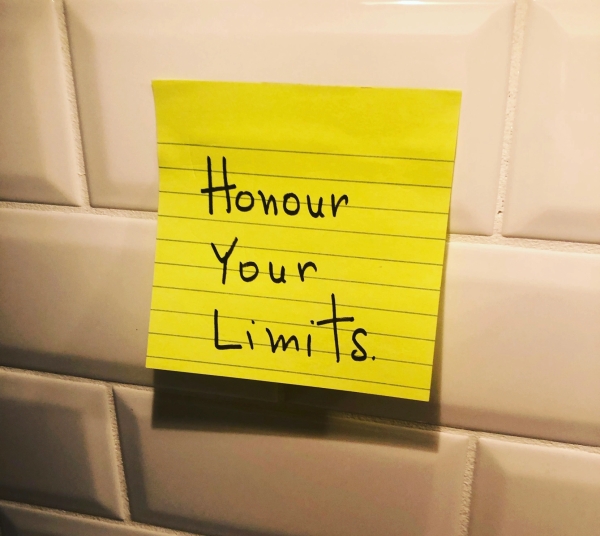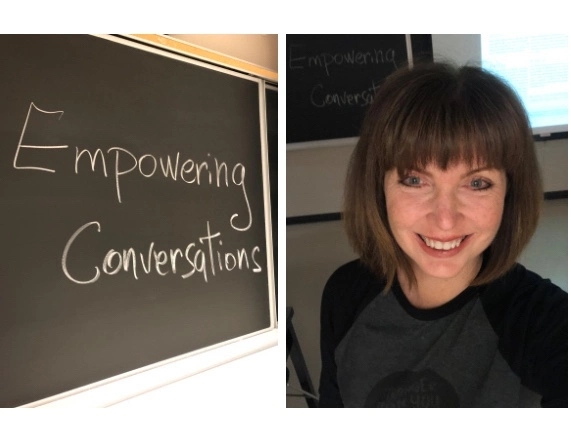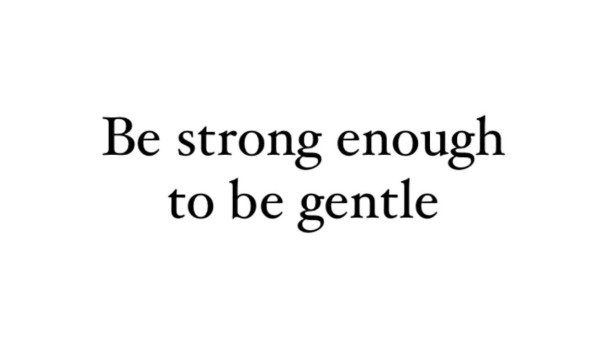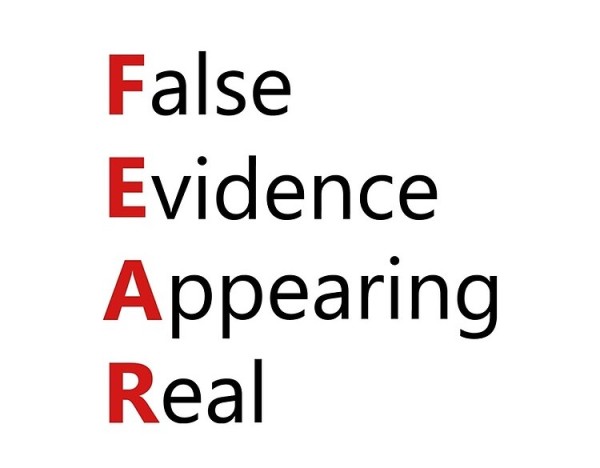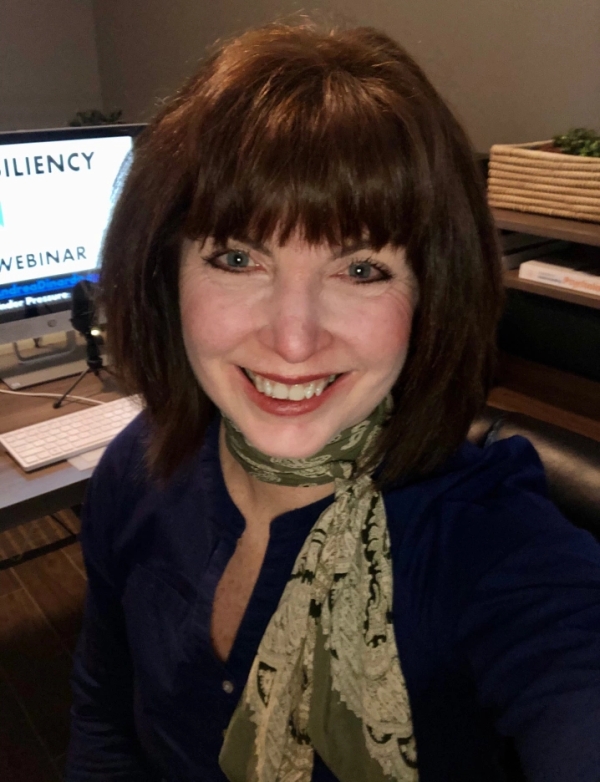https://www.youtube.com/watch?v=oCg1FpazubQ&list=PLlPm9OCnSiX2sXeR2TSXl-iZFPt6Flcnm Speaking Topics: Download HereTraining Overview:Download Here Background and Overview: Dr. Andrea Dinardo is a positive psychology expert, keynote speaker, and leadership trainer who helps people thrive under pressure, build resilience, and cultivate mental health daily. She is passionate about applying positive psychology to facilitate personal growth and transformational change in individuals and organizations. About... Continue Reading →
Delaying Gratification Doubles The Reward
When faced with a decision, ask yourself: Am I rushing the answer? Do I need to slow down? Am I being impulsive? Will I have regrets? Do I have all the information? Is it worth the wait? https://www.youtube.com/watch?v=rXZvf2_UHJ0 Reflection Questions 1. Do you consider yourself a patient person, an impatient person, an impulsive person? Does... Continue Reading →
Laughter is the best medicine
https://m.youtube.com/watch?v=cFzHZ8JYVWk We live in a world weighed down by tragedy and adversity. And we have been conditioned to believe that tragedies require tragic mindsets and hardships demand hardened spirits. We also live in a world overflowing with abundance and joy. https://youtu.be/d4C0_7En6ZY But we cannot see the good from the bad when we are blinded by... Continue Reading →
Self-Talk That Lifts You Up
“Be mindful of your self-talk. It's your conversation with the universe.” As humans, we can’t help but look to the next rung on the ladder. Forgetting the 100 rungs we have already climbed. https://youtu.be/1ALCrzw_1Xo Today’s Psychology Challenge Take note of the trail behind you. The hard work. The success. The heartbreak. The soul awakenings. The... Continue Reading →
Emotional CPR: Catch Pause Repair
One thing that I have learned as a psychology professor and retired psychologist is that simple things on repeat have the greatest impact on our health and happiness. This is why I want to share a sustainable model of emotional and mental health habits called CPR: Catch Pause Repair. CPR Video Edition https://youtu.be/KVfeKg78fEY https://youtu.be/8VvwITnvrhs CPR... Continue Reading →
Community Connection Psychology Interview
https://youtu.be/xwnQthkxSq8 Psychology Reflection Questions Your Turn What topics are you interested in learning about in psychology?
The Stories We Tell Ourselves
https://www.youtube.com/watch?v=119i-Qv-ep0 The Stories We Tell Ourselves In this psychology video and article, I share concrete strategies for transforming painful emotional experiences using a model of cognitive psychology. An A-B-C Formula for reality testing that is especially helpful during outer circumstances beyond a person’s control. What’s real? What’s distorted? A-B-C Scenario The scenario I describe in... Continue Reading →
CULTIVATING MENTAL HEALTH DAILY Professional Development
https://youtu.be/I08EUaQ8g9Y I had the opportunity to give a psychology speech on cultivating mental health daily at the Greater Essex County District School Board in Windsor, Ontario, Canada. Audience Members The audience was comprised of education support staff and front line workers, including Education Assistants, Child and Youth Care Workers, Developmental Services Workers, Teachers, Social Workers,... Continue Reading →
Peace Lives Here
Peace happens in moments. Not days. Not weeks. Not years. Hot coffee. Cozy blankets. Birds singing. The sun rising. https://youtu.be/tNXR9hCHZoc?si=lNaH-DE2kxo60oYe Peace happens in moments. Not days. Not weeks. Not years. Savour the sunshine. Taste every morsel. Dance with abandon. Stroll by the moonlight. Peace happens in moments. Not days. Not weeks. Not years. https://youtu.be/zRSQw-LjU8k Breathe... Continue Reading →
WHAT’S IN MY CONTROL?
Locus of Control is a key ingredient in resilience. Assessing what is within your control and sphere of influence versus what to let go of and surrender is a wellness exercise that must be practiced daily for optimal mental health and energy. https://youtu.be/W7dz0FvnkxY?si=WhAFJHR53EIV9q_p PSYCHOLOGY TEST Locus of Control TestDownload PSYCHOLOGY REFLECTION What’s within your control?... Continue Reading →
Face Everything and Rise
Fight or Flight Threat Response Every time we feel threatened (threat is the fundamental definition of stress) our first instinct is to “fight or flight“. This perpetual “fight or flight” response loop eventually creates a host of secondary problems, above and beyond, the original stressor. Powerpoint Slide from Broaden and Build Leadership Event, January 2022... Continue Reading →
Twelve Days of Self-Care
I am a strong believer in keeping things simple. The less complicated things are, the more likely we are to repeat the behaviour. Especially when it comes to health and happiness habits. https://youtu.be/0i0tuqAmdaw Twelve Days Day 1: Mindful Mornings Add five to ten minutes of relaxation to each of your morning routines. Time expands when... Continue Reading →
Honour Your Limits
Today’s Reminder That You Are Human Honour Your Limits. In every area of your life. It’s not a race. It’s a lifetime. Pace Yourself The world needs what you have to give — long-term. In every area of your life. It’s not a race. It’s a lifetime. https://youtu.be/RK7EzyPXRPA
Anchor Yourself With Light
Take a moment and anchor yourself with something that lights you up. That reminds you that you are not alone in this storm. You have been here before. It may have been a personal pandemic, not a global one. But somehow, deep inside, you made it through. And you will again. You have the courage,... Continue Reading →
Empowering Conversations About Change
The Psychology of Change During this week’s health psychology lecture, we talked about the psychology of change, including the parts of our lives that remain ‘unchanged’ during rapid and unexpected change. What Remains During Change? The Sun Still Rises Coffee Tastes Delicious Trees Greet You on Your Walk Favourite Movie Still Delights Bed is Comfie... Continue Reading →
Let Your North Star Guide You
Mindfulness Tip: Look Up The sky connects us to something bigger than ourselves. Challenges appear small in comparison to the vastness of the sky. Solutions seem plausible. Answers come more easily. In the presence of stars, we embrace the profound and surrender it all. https://www.youtube.com/watch?v=0gMq9BNKvOA
2020 Life Lessons: Be Strong Enough To Be Gentle
Lockdowns have us spending a lot of extra time with the ones we love. Especially during the holidays. And if you’re anything like our household, it requires a whole new level of relationship skills. A deeper level of empathy and compassion for the pressures of the people we are living with. Helpful Tips: Psychology Today... Continue Reading →
Catch Pause Repair (CPR): Healthy Workplace Awards Keynote Speech
https://www.youtube.com/watch?v=8VvwITnvrhs Healthy Workplace Awards This week I did a keynote speech at the Healthy Workplace Awards Ceremony. Given all we are collectively going through, I thought the notes and video from the keynote would be helpful to everyone. News Release: CTV News Especially as we wrap up this year. A year where we collectively experienced... Continue Reading →
Shine your light
https://youtu.be/pjxCsK2qudw?si=xHsV_IBAKQq47am2 I used to think of life purpose as some great big grand scheme for life, something we spend our whole life chasing after. Daunting for sure. At times overwhelming. Then one day I realized that life purpose was a series of small, fleeting events, rather than one great big span of life. Bite size... Continue Reading →
Anxiety Relief Technique
FEAR is an illusion 5 Why's Technique The 5 Why's is a simple and effective technique for understanding the source of our fears and cognitive distortions (irrational beliefs) one why at a time. Exploring the Unconscious Mind An analytic (below the surface) strategy originating in the psychoanalytic theories of Sigmund Freud and Carl Jung. What's... Continue Reading →
Enjoy Every Moment
https://www.youtube.com/watch?v=fd9TrYI75o0 Never let the things you want make you forget the things you already have. Nothing Lasts Forever. Good or Bad. Enjoy Every Moment. Embrace it. Be it. See it. Everything you appreciate is you reflecting back. Homework for Today Look Around You. Notice Things Like You Are Seeing Them for the Very First Time.... Continue Reading →
Freedom is realizing you have a choice
Freedom doesn’t come from holding on. Freedom comes from letting go. Again and again and again. Universal Experience Too often we are hard on ourselves for having to release the same thought, emotion, person, or situation. When in fact that’s how life goes. For all of us. Letting go and surrendering are an ongoing daily... Continue Reading →
Situational Anxiety Interview
Mental Health Matters with Dr. Kathy Garland 1. Video Format of Interview https://www.youtube.com/watch?v=N7ttX6h_D8o&feature=youtu.be Watch on YouTube 2. Podcast Format of Interview https://soundcloud.com/user-240189621/mental-health-matters-dr-dinardo-and-situational-anxiety Listen on SoundCloud and Apple Podcasts Reflection Questions What did you learn about situational versus clinical anxiety from our interview? Can you relate to the personal example of heightened situational anxiety shared by Dr.... Continue Reading →
Compassionate Listening
Even as a psychologist, I often don’t know what to say. Especially now with so many people experiencing pain and trauma in escalating ways. So rather than assume what someone needs, I have learned over the years to ask one simple question: How Can I Support You? In doing so, I create a safe space... Continue Reading →
The Space Between No Longer and Not Yet
The time in between is a difficult time for all of us. Myself included. A super organized (type A) person like me becomes a little unhinged in the space in between. But don't we all? Wondering if we still have what it takes. Hoping we can still make a difference in the world when the... Continue Reading →
Breathe
https://m.youtube.com/watch?v=zRSQw-LjU8k Every time we take a long deep breath, we are telling our bodies that we are safe. Each breath connecting our mind, body, and heart. Bringing us back to present time. 5 Breathing Techniques: Follow Your Breath Become aware of each inhalation and exhalation. Focus on the sensations you feel as air passes through... Continue Reading →
Emotional Freedom Technique for Social Anxiety & Imaginary Audience
Have you ever felt like you’re being watched? Judged and scrutinized. Like all eyes are on you and every potential error you make? Everyone experiences this phenomenon from time to time, especially when trying out something for the first time. Think back to the first time you gave a dinner party, swung a golf club,... Continue Reading →
Ambitious Mama Podcast: Thriving Under Pressure & Posttraumatic Growth
Podcast Details & Show Notes I was recently interviewed by wellness entrepreneur Christa Realba for her Ambitious Mama Podcast Series. During the podcast, Christa and I discussed how posttraumatic growth and thriving under pressure are possible for all of us. In different gradients, and at different times for sure. Depending on where you are on... Continue Reading →
Celebrate how far you’ve come.
Today let’s celebrate all the dreams that came true. Merely an idea 5 years ago. It is so easy to get lost in our hopes and motivations for the future. Without realizing how many of aspirations we have already achieved. Together let’s honour how far we’ve come. Only then will we have the fuel and... Continue Reading →
3 C’s of Thriving Under Pressure
A map for transforming stress into strength https://youtu.be/czXG8odb7pY In my TEDx Talk and leadership training, I discuss how to THRIVE under pressure using 3 stress resilience tools: dr.-andrea-dinardo-thriving-under-pressure-training-and-speaking-servicesDownload 1. Commitment Envisioning a higher purpose above and beyond the immediate stressor. https://www.youtube.com/watch?v=pjxCsK2qudw 2. Challenge Reframing stressful challenges as opportunities for growth. https://www.youtube.com/watch?v=F7TFtJHASn8 3. Control Focusing on the things... Continue Reading →
Psychology YouTube Channel
Psychology Interviews, Leadership Sessions, Interactive Workshops, Live Seminars, Keynote Talks and So Much More! Click Here: https://m.youtube.com/c/DrAndreaDinardo Vision and Mission The purpose of my YouTube Channel is to share key lessons from psychology lectures in as little as three to five minutes. I know how busy everyone is. And I love a good challenge! Psychology Playlist https://m.youtube.com/playlist?list=PLlPm9OCnSiX2sXeR2TSXl-iZFPt6Flcnm... Continue Reading →
Coping With Loneliness
When we feel a painful emotion, our first instinct is to pull away. To numb the pain. To hide from the intensity. This was the case for Sarah and Jack, two unique individuals with vastly different circumstances. But they each experienced the same emotion: loneliness. An emotion that is heightened during the holidays. SARAH Sarah... Continue Reading →
CPR: Catch Pause Repair
https://www.youtube.com/watch?v=KVfeKg78fEY Catch Pause Repair (CPR) is a Framework for Sustainable Mental Health & Resilience Habits. CPR includes three simple steps as outlined in the video. 1. Catch Catch yourself before a stress response escalates by becoming more aware of what triggers you. 2. Pause Pause and take a 60 second time out when you feel... Continue Reading →
Improve Mental Heath with Positive Psychology
https://youtu.be/I08EUaQ8g9Y Reevaluate Your Approach to Mental Health Instead of thinking of mental health as a burden you must shoulder, imagine it as an opportunity to experience peace and joy. In the same way that we make time for our physical needs, we must devote equal attention to our psychological needs. Original Source — The Drive... Continue Reading →
HOPE CHANGES EVERYTHING
H old O n P ain E nds During difficult times, I often tell myself: “What a difference a day makes.” This one simple sentence helps me to remember that tomorrow is a brand new day. Illuminating the possibility that what looks like the end in that dark moment, could in fact be preparing me... Continue Reading →
Happiness and Healing in Present Time.
You have the ability to make positive changes in your life. Right here. Right now. Don’t wait for “the perfect time” to transform your life. NOW IS YOUR POWER.
FOMO ANXIETY Simple Tips for Feeling Better
This post is for anyone experiencing FOMO. Particularly on a long weekend holiday! https://m.youtube.com/watch?v=I2P5VhC-Ih8 Psychology Insight: Holidays heighten social anxiety of every kind. FOMO especially. Consider these questions as you explore what’s going on below the surface. 1. Do you remember the first time you experienced FOMO? 2. How did you cope with the anxiety... Continue Reading →
Optimism Bootcamp for Health Empowerment
Nathalie Begin author of the Gutsy Feeling Blog invited me to give a positive psychology workshop called Optimism Bootcamp at a Symposium for Crohn’s & Colitis Canada. The audience was filled a very special group of people. Individuals that have been battling the chronic condition of Inflammatory bowel disease (IBD) their whole lives. Optimism and Health... Continue Reading →
Positive Psychology on Campus
https://youtu.be/qGg70RIiUR8 Positive vs. Traditional Psychology "While traditional psychology focuses its attention on pathology and problems, in the relatively new field of positive psychology, researchers strive to explore and understand the strengths of individuals that contribute to their flourishing." Source: Psychology Guide PHILOSOPHY OF EDUCATION Strengths first I am passionate about what positive psychology can do... Continue Reading →
The Happiness Class
Reflections on Happiness One of my favourite things to do as a professor is to stay after class and talk to students about what hit home for them about each week’s lecture. Fresh Perspective Students look at the world in a very unique way. Motivating me to think about psychology at a whole different level.... Continue Reading →
Radio Interview: Social Media and Mental Health
Social Media and Mental Health is a frequent topic and active discussion in my psychology class with college and university students.Social media is here to stay. The question is how can we teach our children, students, and each other to use it responsibly. How do we lead the way? LIVE FROM AM800 STUDIO https://omny.fm/shows/am-800-cklw/april-anderson-talks-to-dr-andrea-dinardo Your... Continue Reading →
Empowering Conversations About Health
In today's psychology class, we discussed how important it is to empower friends, family, and clients going through difficult times. And how even if we are an expert in psychology, nursing, or business - it does not make us the master of someone else's life. HONOUR THE PERSON IN FRONT OF YOU Together we explored... Continue Reading →
Your emotions have a message for you.
Create space for feelings to flow. Emotions are neither good or bad. Only labeling makes it so. Don't run from challenging emotions. Instead, lean in and ask: “What are you trying to tell me?" Witness. Observe. Learn. https://www.youtube.com/watch?v=jQKomXhKKbE&t=29s The best part is how small fear appears close up! We must go in — to get... Continue Reading →
How we talk to ourselves matters
https://m.youtube.com/watch?v=FHAotUT2eAY How we talk to ourselves matters. Particularly in the eye of the storm. Having a “go to” mantra in times of uncertainty helps. Especially in the uncomfortable, agonizing moments between stress and strength. An image that helps me is imagining myself growing roots and wings during dark times. Chanting “I am expanding” as the... Continue Reading →
Mental Health Education
https://www.youtube.com/watch?v=gqs-qUHSAnA In Celebration of Mental Health Awareness Month CULTIVATING MENTAL HEALTH DAILY In this video, I share an overview of my psychology article in The Drive Magazine (May, Issue 121). An issue devoted entirely to mental health awareness, treatment, and prevention. With the ultimate goal of ending the stigma of mental illness. A topic I... Continue Reading →
Optimism Bootcamp Workshop and Article
OPTIMISM BOOTCAMP: Overcoming Learned Helplessness is a dynamic, interactive psychology workshop based on an article I wrote for The Drive Magazine https://youtu.be/z_DNIWYh6vE 1/ Optimism Article https://thedrivemagazine.com/posts/optimism-bootcamp 2/ Optimism Bootcamp - April 2019 https://youtu.be/z_DNIWYh6vE 3/ Optimism Bootcamp - August 2019 https://youtu.be/LgACYyFv2YQ
Women with Drive Summit
“Expand your knowledge by expanding your community.” In celebration of this year’s International Women’s Day I had the opportunity to speak at a Windsor Summit called Women with Drive. A local conference organized by a young woman named Cierra Bray, who poured her heart and soul for months into planning, organizing, and promoting the exhilarating …
The power of beliefs.
Belief plays a pivotal role in success. Believing that you have what it takes. Believing that you can try again. Believing in something greater than yourself. Believing you are never alone. Believing your power is greater than your pain. Believing that things are going to get easier. https://www.youtube.com/watch?v=wKimTCawJls In this 5 minute training video, I... Continue Reading →
Empathic Listening: How Can I Support You?
How do you respond when a close friend shares a problem with you? Are you a fixer or a listener? If you’re anything like me, my first instinct is to fix the problem. To try and save loved ones from adversity. To rescue them. To make them instantly feel better. I suggest we do the... Continue Reading →
Growth Moment Meditation
Reframe stressful moments as growth moments. Opportunities moving you one step, one breath, one moment closer to your dreams. One thought debilitates. The other levitates. https://www.youtube.com/watch?v=3ucdU7URx5g


